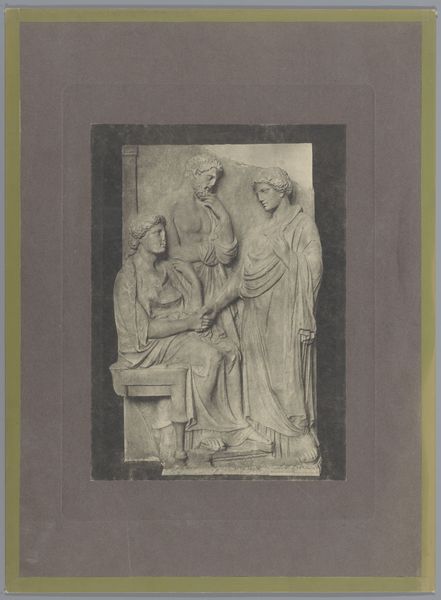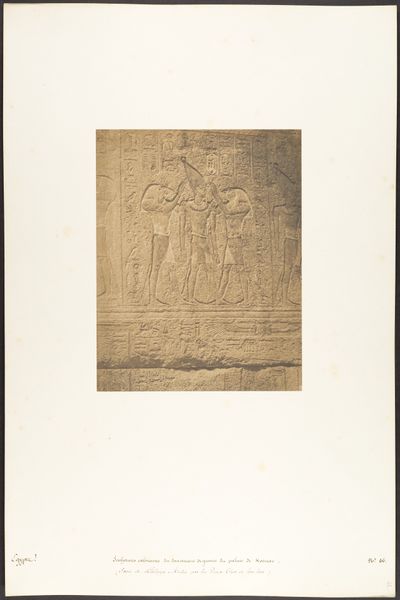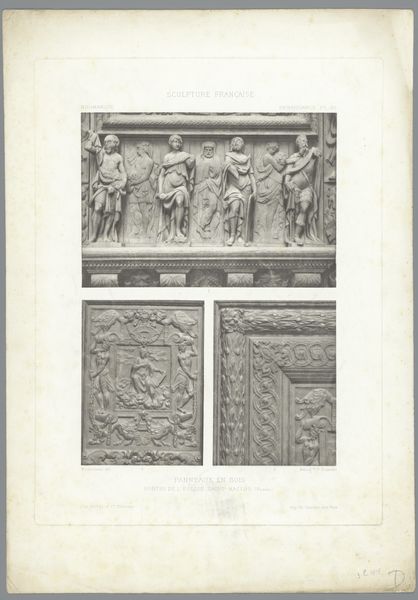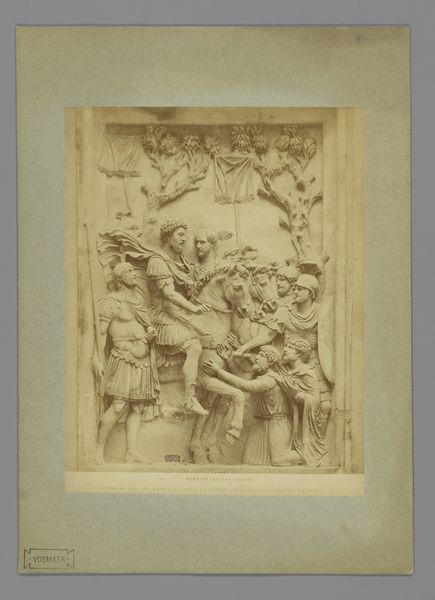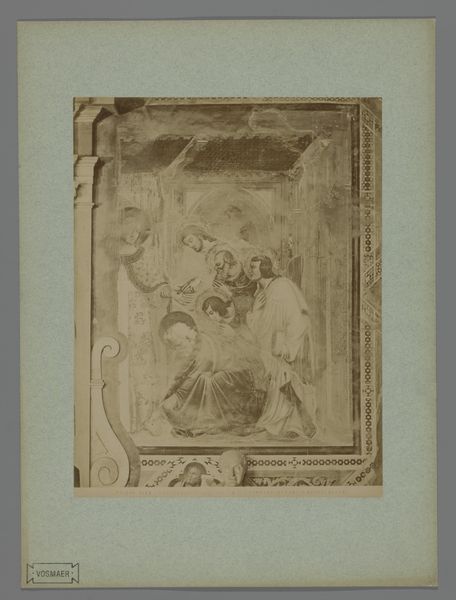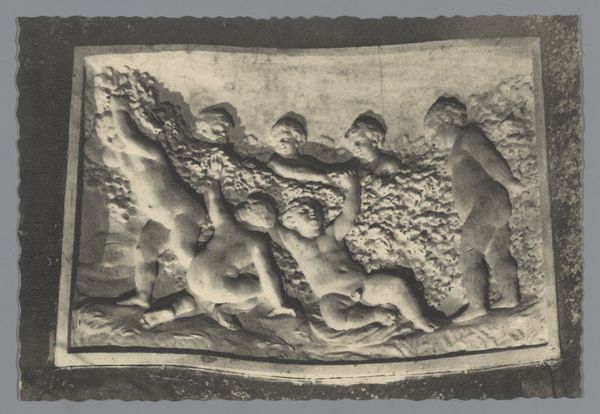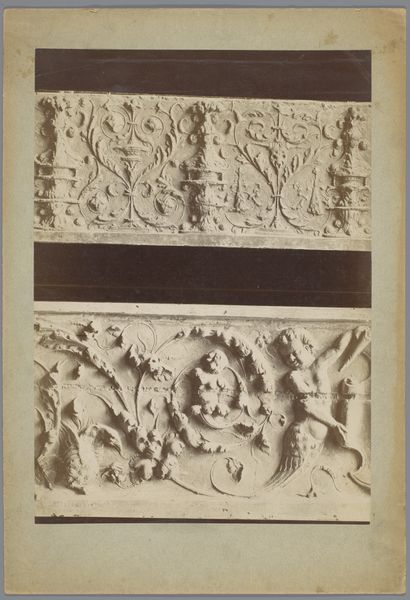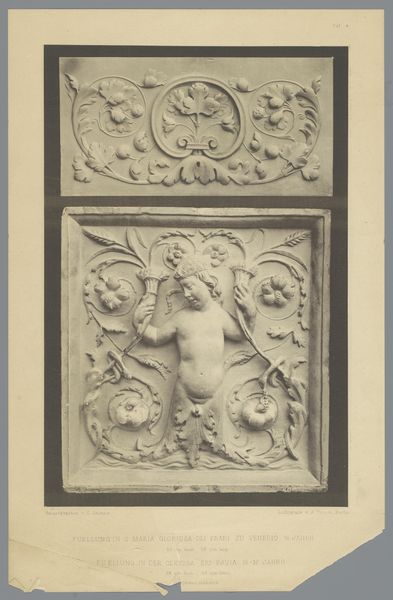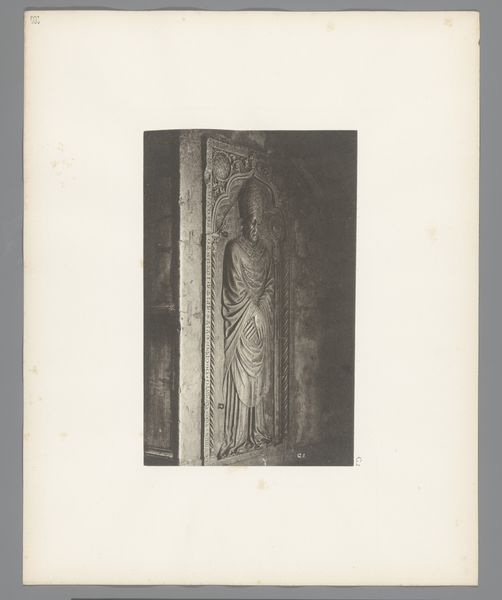
relief, bronze, photography, gelatin-silver-print
#
muted colour palette
#
greek-and-roman-art
#
relief
#
landscape
#
paper texture
#
bronze
#
figuration
#
photography
#
carved into stone
#
ancient-mediterranean
#
horse
#
gelatin-silver-print
#
history-painting
Dimensions: height 615 mm, width 455 mm
Copyright: Rijks Museum: Open Domain
Curator: Let's turn our attention to this photograph, “Twee details van het Parthenonfries,” taken in 1897. The photographer is anonymous, and it’s a gelatin silver print now residing here at the Rijksmuseum. My initial feeling is one of solemnity and muted power. The light is subdued, focusing our attention on the forms themselves. What strikes you? Editor: It has this textural quality, doesn't it? Looking at the gelatin-silver print, I'm immediately thinking about the layered process: the labor involved in the quarrying and carving of the original marble reliefs, the journey the stones took, and then the subsequent photographic documentation of the relief, turning a three-dimensional object into a two-dimensional representation on paper, circulating as a reproduction... It really makes you think about accessibility, doesn't it? Curator: Absolutely. I am interested in the narratives frozen in these scenes, both segments of the Parthenon frieze. Above, we see deities, perhaps engaged in discussion, the flowing robes alluding to grace and authority, a symbolic visual language representing the Athenian gods. Below, there’s a dynamic scene of horsemen, bursting with movement and suggesting a procession or parade. I find myself wondering about the values these scenes represent: order, power, civic pride... Editor: The medium here shapes the message as well. The sharp focus in the foreground that fades off behind—it emphasizes the subjects' depth in relief, but it flattens and packages it at the same time. The photographic process makes a costly and monumental work accessible to many through the mass production and consumption of photographic prints. How might those access dynamics reshape the work's cultural meaning and use over time? Curator: It underscores a crucial aspect of historical study—the continuous act of interpreting the past through evolving lenses. By viewing them through the photograph, this invites further layers of interpretation shaped by technological innovation and evolving social values. In the depiction of gods and horsemen there are layers of meaning around power, identity and culture in Athens. Editor: Exactly. What this photograph offers is access. And how that plays into a modern understanding of art history is constantly in flux. The original sculptures, certainly magnificent, possess a particular power linked to the inherent skill and the expensive materials, a labor for the elite. With photography, a new dialogue is formed around consumption and meaning. Curator: This piece really offers a unique space to meditate on our relationship with antiquity. Editor: Indeed. It highlights how profoundly the meanings of images evolve as their modes of production and accessibility change.
Comments
No comments
Be the first to comment and join the conversation on the ultimate creative platform.


